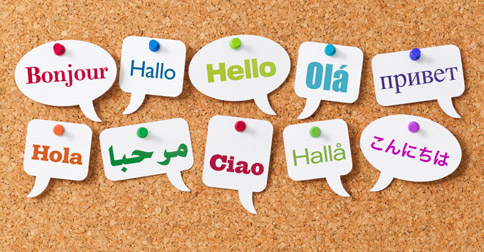Have you ever thought if a student cannot connect with the teacher or a tutor due to the language barrier? Or what if someone who is working in any education sector cannot communicate with students, parents or staff? It would be difficult, right? Don’t worry; it has a solution. The solution is incorporating translation in language education. Yes, only translation can be the answer. In this blog you will get enough knowledge about translation and the importance of translation.
Anyways, translation in language education cannot be underestimated in the education system. It has many perks. Translation in language teaching methods can help bridge the communication gap between the teacher and the student.
We all know the importance of education and how it paves the way for the future. Everyone deserves to be educated, whether they are young students, adolescents, college students or anyone who is trying to learn new skills. Let’s go through the blog to know more.
Why is Translation in Language Education Important?
In the overall education system, translation plays a vital role. It improves their hold on new languages for language learners. Especially, for the second or third languages, students can see great results. In understanding the history and culture of a new country, translation plays an important role. Translation as a language learning method is important as it spreads ideas, knowledge and information.

Translation in language education is necessary for topics like textbooks and educational software, along with assessments. Trainers and educators, too, need transcripts to be translated, admission papers, handbooks and translated school records, especially of children from other countries.
The main goal of translation in language education is to make sure that both the students and the teachers understand each other comfortably. It is needed for the student to understand the concept that the teacher is sharing with them. In return, students should interact back and forth with their tutors to understand the content better, maybe by asking questions or answering back.
Contribution of Translation in Language Education
Here, we will discuss a few good ways in which translation in language education contributes to the education system. They are:
Contribution to Culture:
Translation involves not just words but also the cultural context in which those words are used. When something is being translated, it’s not just the words getting translated. Also, it considers the cultural implications of those words.
For example, one language has different connotations than some words in another language in addition to individual words. While translating, consider cultural norms and expectations. Culture also plays an important role in how language is interpreted.
In every culture, language is important. Therefore, easily communicating in a second language and native language can do wonders in preserving cultures. As the English language dominates the world, translation in language education holds up the uniqueness and importance of other languages for students across the world.
Therefore, there is a huge chance of the growth of translation in language education, whether it is through audio, videos, interactive quizzes or books in the Indian language.
Contribution to E-learning:
Industry experts who create e-learning programs can meet many training requirements with better translation. E-learning can grow well if the material provided is translated. For example, it can simply grow by adding subtitles with native languages in different languages. People worldwide will easily catch the idea and understand the concept as they are provided with reading materials in their native languages.
Contribution to Literature:
Literature translation is the translation of prose into different languages. It includes the translation of literature to reach a wider audience. In most cases, ancient languages are translated.
Translation of literature texts helps in understanding the literature and ideas from different countries. For example, a huge amount of literature has been written on elements of common humanity, environmental phenomena, human rights issues, etc. The translation of all these can help in promoting values among the people of different communities. Similarly, when a reader reads a poem or a story that has been translated from a foreign language, he gradually perceives the text with its character, emotion and meaning.
Is the Translation of Online Lectures Necessary?
Absolutely, translation of online lectures is necessary. E-learning is basically based on either online, remote or recorded lectures. All of them take over the traditional classroom system where only one language is used to teach.
The reasons why the translation of online lectures is necessary are:
- Translation of education content helps people all over the world to understand the language used in the lecture.
- If anyone is trying to learn new skills and a new language, they can take the help of the subtitles for better understanding and improving pronunciation skills.
- Suppose a person wants to learn about a culture or history, but he doesn’t have time for traditional classes. In such cases, he can take the help of online lectures in the language he prefers.
Whether you are a student, a teacher or a content creator, using subtitles can help you in improving the quality of e-learning content.

FAQs
Why is translation important for students?
The main goal of translation in language education is to make sure that both the students and the teachers understand each other comfortably. It is needed for the student to understand the concept that the teacher is sharing with them.
Who is the father of translation?
Saint Jerome is the father of translation.
Who is the first translator in India?
Kisari Mohan Ganguli, also known as K. M Ganguli, was India’s first translator. He translated the Sanskrit epic Mahabharata into English.
When did translation start in India?
There are many records proving the ancient use of translation in language education and other areas. However, translation was started in India in the 18th and 19th Centuries.
Summing Up
Translation in language education enhances accessibility by removing the language barrier. Also, it helps in making both parties understand each other easily and comfortably.
So, we have discussed how much translation is important in the education system to provide a better experience to students. Also, the blog highlighted the contribution of translation to different aspects of education.
Did you enjoy the write-up? Don’t forget to share your thoughts in the comments below. To read more, follow our website now.



Comments 0